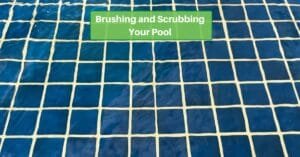A backyard pool can be the centerpiece of your outdoor living space. Hosting summer get-togethers or just unwinding after work are just two of the fantastic activities you can do there, and the landscaping around your pool sets the tone for the entire space.
Good poolside landscaping isn’t just about looks; it’s also about comfort, safety, privacy, and long-term maintenance. A well-designed landscape makes your pool area more functional and enjoyable, without adding hours of extra upkeep. Whether starting from scratch or refining what you’ve already got, the right plan can make a huge difference.
Defining Your Goals and Understanding Your Space
Before planting anything or laying a single stone, it’s important to take a step back and get a feel for what you want out of your pool area. Are you envisioning a lush tropical retreat? A clean, modern space for entertaining? A low-maintenance, kid-friendly yard? Each of these should play out differently regarding the plants you choose and the hardscaping you install.
Also, consider how you use the space. Is your pool primarily for exercise, relaxation, or family time? Is it in the middle of your yard, or tucked into a corner? Your landscaping should complement the use and layout. For example, if your pool is exposed to strong afternoon sun, you might prioritize adding shade features like trees. If you entertain a lot, open space and flow become more important than dense planting.
Take stock of the layout and existing elements, too. Are there areas that get soggy when it rains? Where do people typically walk? Do you have neighbors close by who can see into the yard? This is also when you want to check any zoning rules or HOA restrictions, especially if you plan to add structures like fencing or lighting.
When you take the time to define your goals and assess the space honestly, everything else gets easier—from choosing the right plants to deciding how much you want to invest. Even small backyards can feel expansive and well-designed if the layout works with the environment, instead of fighting against it.
Choosing the Right Plants for Poolside Landscaping
Plants can transform a plain pool area into a lush retreat, but it’s important to consider what you plant and where. The goal is to strike a balance between beauty and practicality. You want to choose plants that thrive in your local climate, won’t create a mess, and can handle the unique challenges of being close to a pool.
Start with climate-appropriate plants. If you’re in a region with cold winters, you’ll want hardy shrubs and perennials that can survive freezing temperatures. In warmer zones, you’ll have more flexibility with tropicals and flowering plants. Native species are always a great choice—they’re well adapted to the environment and usually need less water and maintenance.
Avoid messy or aggressive plants. Certain trees and shrubs might look beautiful but can quickly become a nuisance. Plants that drop leaves, berries, flowers, or needles will end up in your pool and clog your filters. Likewise, steer clear of aggressive root systems that can damage pool plumbing or crack nearby pavement. Bamboo and some large trees fall into this category unless you use root barriers or containers.
Low-maintenance and drought-tolerant options are a good bet for most pool areas. Look for ornamental grasses, lavender, daylilies, succulents, and compact evergreens that can tolerate a bit of splash and reflected heat from the pool deck. These types of plants tend to look good all season without demanding much attention.
Think about height, layering, and privacy. Tall plants like clumping grasses or columnar evergreens can provide natural screening from neighbors. On the other hand, shorter flowering perennials and groundcovers can soften the edges around paving or fencing. Creating visual layers—from tall in the back to low in front—makes your space look polished and helps guide the eye across the space.
Avoid thorny or toxic varieties, especially if kids or pets use the yard. Plants like oleander or agave may be visually striking but pose risks if brushed against or ingested. Likewise, steer clear of anything with sharp leaves or prickly textures along walkways or lounging zones.
Lastly, be strategic about plant placement. Leave enough space between the pool and planting beds so maintenance is easy and you don’t end up sweeping constantly. Use beds and borders to anchor seating areas or pathways, and consider planters where the ground space is tight. With thoughtful placement and good plant choices, you’ll create a landscape that feels lush, inviting, and refreshingly low-stress.
Designing with Hardscapes: Decking, Paths, and Decorative Elements
While plants add life and color to your poolscape, the hard surfaces—decking, walkways, and other structures—do the heavy lifting when it comes to functionality and form. Getting the hardscaping right ensures your pool area is safe, easy to navigate, and visually cohesive.
Start with the pool deck. This is the largest hardscape element and has a big impact on both safety and style. Materials like poured concrete, natural stone, pavers, and composite decking are all popular, each with pros and cons. For example, concrete is durable and cost-effective but can crack over time, while natural stone looks high-end but may get slippery when wet. Whichever you choose, prioritize non-slip surfaces and lighter colors to keep the area cool underfoot.
Plan for pathways and transitions. If your pool sits within a larger yard, think about how people will move between the house, lawn, garden, and patio. A winding paver path or a few strategically placed stepping stones can make these transitions feel intentional and well-connected. Wide, flat surfaces are especially helpful for moving lounge chairs, pool equipment, or coolers in and out.
Add dimension with features like retaining walls or raised beds. These elements help define zones and manage sloped yards while offering opportunities for additional seating or planting areas. A low wall around one side of the pool might double as a bench, or you could use a raised bed as a backdrop for tall privacy plants.
Don’t forget the decorative accents. Hardscaping also includes features like fire pits, water fountains, or even sculpture pieces. These touches give personality to the space and encourage use beyond swimming—like nighttime lounging or outdoor dining. Just be sure they complement the pool’s materials and color palette so nothing feels out of place.
Lighting is part of hardscaping too. Built-in LED path lights, deck lights, or string lighting can make a big impact on ambiance and safety after sunset. Consider illuminating steps, walkways, and focal points like water features or planting areas. Solar-powered options are great for flexibility, but wired systems offer longer-lasting and brighter light.
Keep maintenance in mind. Choose materials that are easy to clean and resistant to pool chemicals. Sealed concrete or composite decking resists staining from sunscreen and chlorine, while natural stone may require periodic sealing to stay looking good.
Blending hardscaping with plantings in a way that feels intentional takes a bit of planning, but the results are worth it. A well-balanced mix of soft and hard elements creates a polished, inviting space where you’ll want to spend time—even when you’re not in the water.
Bringing It All Together: Furniture, Storage, and Smart Layout
Once your plants and hardscaping are in place, it’s time to focus on the elements that make your pool area livable day-to-day. A good layout and smart features ensure the space functions the way you actually use it — whether that’s for relaxing with a book, entertaining friends, or managing kids and pool gear on a summer weekend.
Choose furniture that suits both style and function. Loungers, dining tables, benches, and even small side tables help transform the area from a swimming spot into a destination. Materials like powder-coated metal, resin wicker, and teak stand up well to sun and moisture, but it’s also worth investing in quality cushions and covers to protect your seating. Look for fade-resistant fabrics that dry quickly and can be stored easily when not in use.
Plan zones for different activities. Think about how you use the space: Do you need a shady spot for reading? A dining area for family meals? Room for sunbathing? A cluster of lounge chairs near the pool, a shaded dining area off to the side, and perhaps a hammock in a quiet corner can all work together in a layout that flows and feels natural.
Incorporate storage to keep clutter at bay. Towels, pool noodles, cleaning supplies, and toys have a way of spreading out and making a mess. A small shed, a weatherproof bench with hidden storage, or even a vertical shelving unit tucked against a wall can make a big difference in keeping things tidy. Make sure storage is easily accessible from the pool, especially if you have kids running in and out all day.
Think seasonally. If you live in a region with changing seasons, plan for how the area will look and function year-round. That might mean adding retractable shades or pergolas that can be covered in the heat of summer and opened in the fall, or using modular furniture that’s easy to rearrange or store off-season.
Don’t overcrowd. As tempting as it is to use every square inch, leaving negative space makes the whole area feel calmer and more usable. Walkways should be clear, and people should be able to move around loungers and tables without squeezing through tight gaps. Remember — a little breathing room makes everything more inviting.
Final touches matter. A few planters with herbs or flowering annuals, some lanterns or string lights, and a well-placed outdoor speaker can all help tie the space together and make it feel personal. Aim for a balance of beauty and practicality. Your pool area should be easy to maintain, but it should also reflect your personality and be a place you enjoy spending time.
Landscaping around your pool isn’t just about looks — it’s about creating a space that works for you and your lifestyle. With the right mix of greenery, structure, and thoughtful design, your poolside area can become a true extension of your home, not just a summer afterthought. Whether you’re starting from scratch or refining an existing setup, every decision you make, from the paving stones underfoot to the plants at the border, helps turn the space into your own private retreat.









